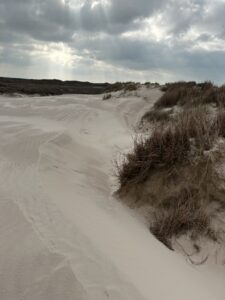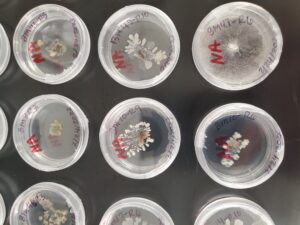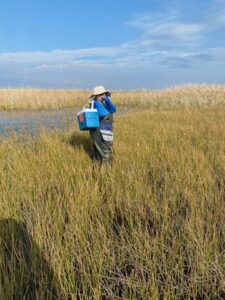Microbial interactions and community dynamics under global change
1. Title: Mycorrhizal diversity in the understudied gulf coast prairie dunes ecoregion in South Texas
2023-2024
Funder: Society for the Protection of Underground Networks (SPUN)
The gulf coast prairie dunes and marsh ecoregion in South Texas is an understudied region, particularly in the field of fungal ecology. The coastal dune ecosystems defining the barrier island ‘chains’ in South Texas along the northern Gulf of Mexico provides many important ecosystem services such as wildlife habitat, flood prevention and serves as the first line of defense against hurricanes and sea level rise. Despite the importance of these coastal dune mycobiomes and specifically, mycorrhizal communities, they have been largely unexplored. Without the basic understanding of the nature and tempo of these mycobiomes as they respond to their natural environment, it is challenging to have a better and accurate prediction of how much diversity is lost or being lost due to environmental changes, and the ecosystem-level and ecological consequences of such loss. This project aims to provide basic information on the distribution and diversity patterns of soil mycobiomes in the region. Insights gained from the proposed study can also help inform coastal management and conservation and aid in nature-based solutions for rehabilitating some of these barrier island habitats – for example, AMF-assisted belowground growth of coastal plants.

2. Title: Competition and fitness among plant fungal endophytes and pathogens
Ongoing
Funder: Texas Comptroller, Texas Research Fund
This project aims to assess endophyte fitness and tolerance to environmental stressors including salinity and oil and heavy metal contaminants. We use traditional culture assay and genetic approaches on microbes we have isolated from plants and soils. We also aim to isolate and characterize endemic fungal pathogens and develop a biocontrol against such pathogens.

3. Title: Ecological drivers shaping culturable plant endosymbionts and implications for stress tolerance
ongoing
Wetland ecosystems provide critical and important functions such as organic matter decomposition and nutrient cycling. Soil and endophytic (microbes inside plant tissues) microbial communities can regulate these functions. Yet, our understanding of the processes underlying the assembly and functions of these microbial communities remains limited. We examine the relative influences of a suite of biotic and abiotic factors on the distribution, diversity and structure of fungal and bacterial communities within the rhizosphere, root and leaf endosphere in wetland plant species: Batis maritima, Taxodium distichium and Spartina alterniflora.


4. Title: Mangrove-associated rhizosphere microbial community responses to nutrient enrichment
2022-2025
Increasing anthropogenic-driven nutrient enrichment (i.e., fertilization) in coastal ecosystems is a persistent concern globally. This project examined the effects of 5-year nutrient enrichment on mangrove-associated rhizosphere microbial communities and functional potential. In a manipulative field experiment, different types of nutrients (N, P, NP and Fe) were introduced to field plots along Oso Bay in South Texas. Using high-throughput sequencing, bacterial communities and metabolic functional potential were profiled. The project was in collaboration with Drs. Ed Proffitt and Donna Devlin.